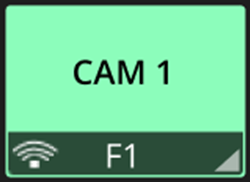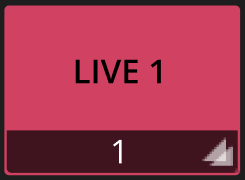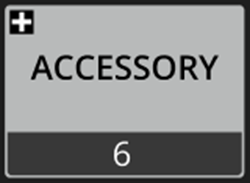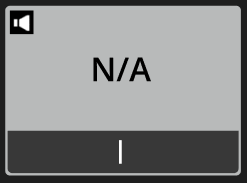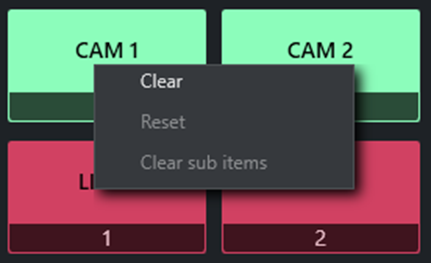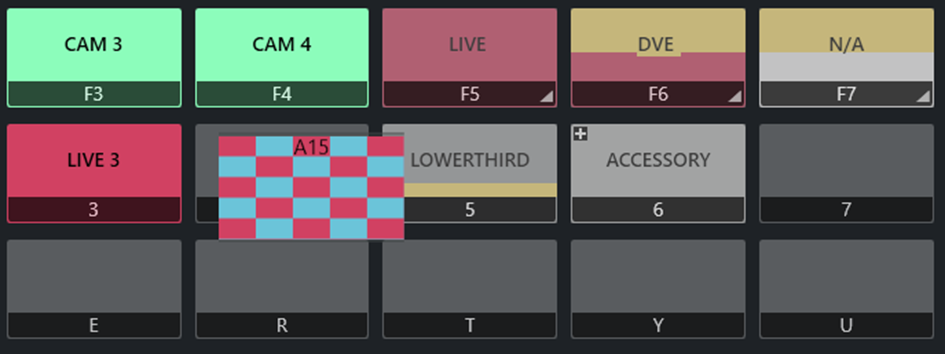The Shortcut Keys area is by default across the bottom of the Viz Mosart GUI, displaying any configured shortcut keys.
Keyboard combinations can include CTRL, ALT and SHIFT to present additional keyboard shortcuts.
Note: The example above shows how the Viz Mosart UI mimics a standard computer keyboard with the key label shown under the rectangles. Key labels on your keyboard may be different.
Skip to section On Air Shortcut Operations to learn about using shortcuts whilst a show is running.
Button Details
Each button presents its operation and status details.
Button Detail | Description | |
|---|---|---|
Text | The naming on the button displays the text entered in the Keyboard Shortcuts Editor. Alternatively, if the button is bound to some NRCS content, it can display the corresponding NRCS slug. | |
Label (below) | The characters at the base of the button identifies which keyboard button is controlling the operation named on the button. | |
Color | The color (button color or stripe at the base of the button) corresponds to the template to be taken.
| |
Luminosity | A dimmed button is non-operational. This button status means that Viz Mosart is awaiting NRCS content (not yet received). For example, in the large screenshot above, LIVE (button F5) is dimmed (compare with the active LIVE 1, 2 and 3). | |
Status | Color-coding also indicates status:
| |
In the illustration above:
| In the illustration above:
| |
Corner Icons | Lower right Triangle icon: The button operation is bound to NRCS content. Lower left Public icon: The button has been manually updated and is shared with all Mosart UIs on the same server. Audio icon: The audio symbol in the upper left corner of a button indicates that this an Audio template. Accessory icon: The 'plus' symbol in the upper left corner of a button indicates that this an Accessory template. | |
Context Menu
| Right-clicking over a keyboard shortcut displays a context menu. Note: Importing an existing keyboard shortcuts file into a newer version of Viz Mosart may give unexpected operational behavior. It is highly recommended to verify keyboard-driven operations after an upgrade, and as necessary, redefine the shortcuts, before going on-air. The availability and actions of this menu depend on preferences set in the Keyboard Shortcuts menu (Tools > Keyboard shortcuts editor)
| |
Administration status | In the Viz Mosart UI menu Tools > Keyboard shortcuts editor, Blue border: The button is being worked on using the Keyboard Shortcuts Editor. In the illustration above:
| |
This section contains:

